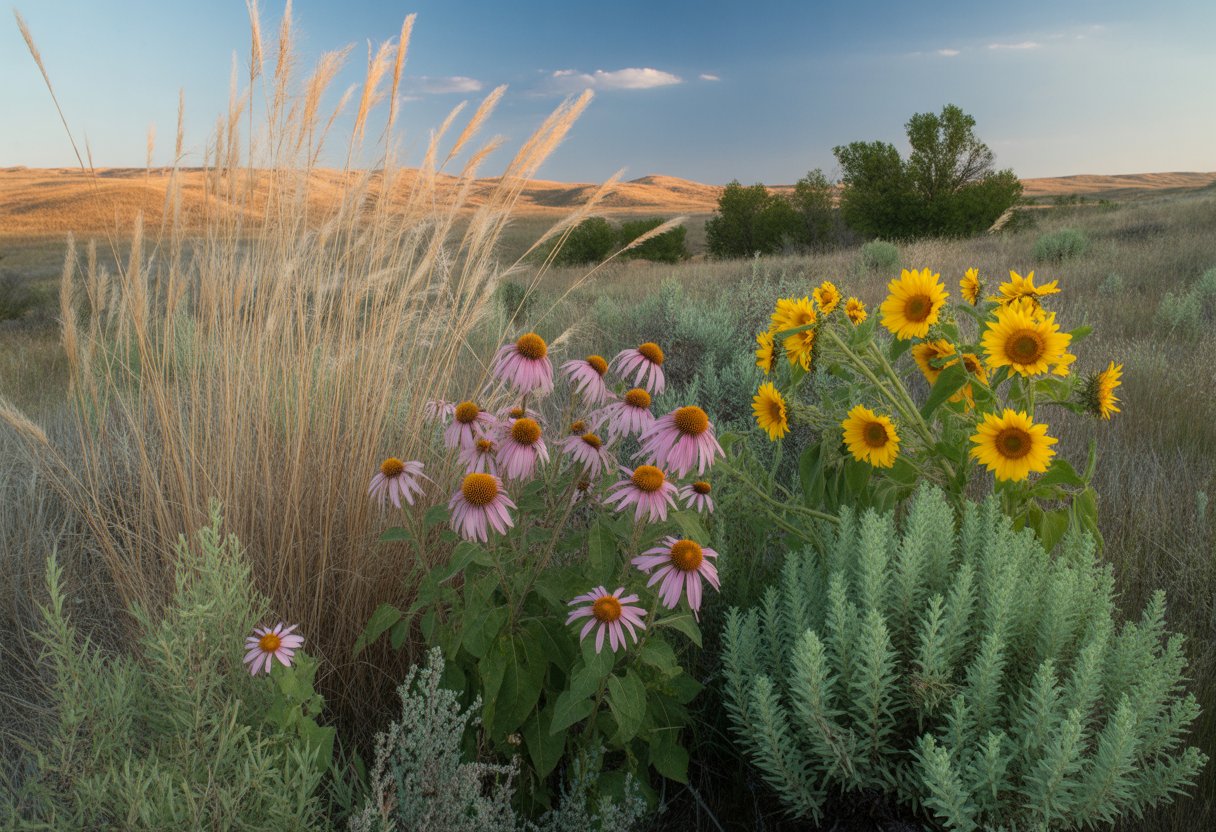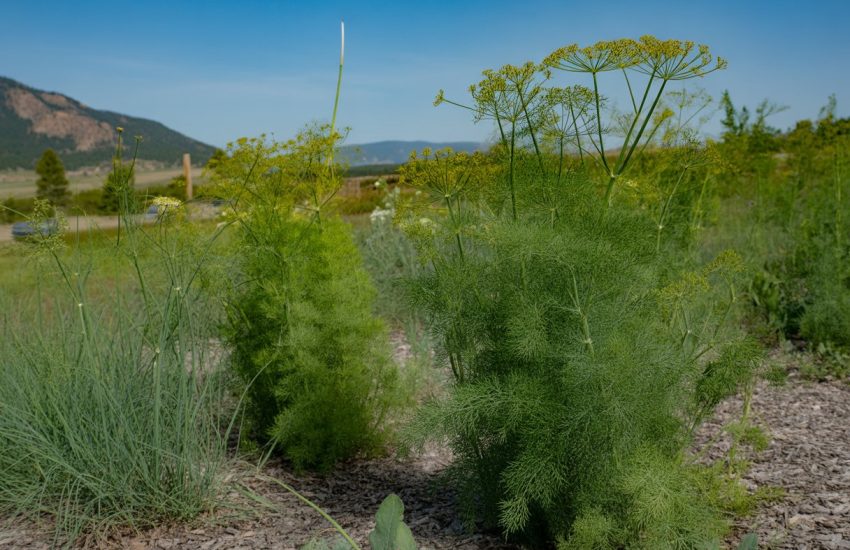Drought Tolerant Native Plants Nebraska for Sustainable Landscaping and Water Conservation
Nebraska’s climate loves to throw in dry spells that challenge even the most optimistic gardeners. If you want healthy, low-maintenance greenery, you’ll probably end up turning to drought tolerant native plants that just seem to “get” the local environment.
These native species need less water and care, yet still thrive in Nebraska’s quirky soil and weather.

Choosing plants like purple coneflower, little bluestem, and prairie dropseed keeps landscapes going strong during drought. They support local wildlife and cut down on irrigation, making them practical and, honestly, pretty eco-friendly.
If you know which native plants can handle Nebraska’s dry moods, you’ll save time and resources. It’s a bit of a gardening cheat code.
Understanding Drought Tolerance in Nebraska’s Native Plants
Nebraska’s native plants have evolved to handle all sorts of moisture swings. They’ve picked up survival tricks that suit the state’s frequent dry spells.
Their traits and the local climate explain why they do so well, even when rain refuses to cooperate.
Nebraska’s Climate and Drought Patterns
Nebraska’s got a continental climate—hot summers, cold winters, and not much in between. Droughts pop up a lot, especially during late spring and summer, when rainfall can get weirdly stingy.
The severity changes depending on where you are, but central and western Nebraska usually get hit hardest. These dry spells drain soil moisture, making life tough for plants.
Native species that are used to these cycles just make better use of what water they get. Harsh seasons have shaped them into survivors that don’t wilt at the first sign of trouble.
Adaptations for Drought Survival
A lot of Nebraska’s native plants grow deep taproots that reach water buried way below the surface. That’s how they keep going when the topsoil dries out.
Other plants grow small, waxy, or even hairy leaves to cut down on water loss. Some will just slow their growth or go dormant when things get really dry.
They’ve developed tough tissues that resist wilting and bounce back fast after rain. Prairie Coneflower and Little Bluestem are good examples—these guys just don’t quit, even under drought stress.
Top Drought Tolerant Native Plants for Nebraska Landscapes
Nebraska’s climate pushes plants to deal with heat, low rainfall, and full sun. Picking native species helps your landscape survive and supports local wildlife, so drought-tolerant choices really matter for trees, shrubs, grasses, and flowers.
Drought-Tolerant Native Trees
Bur oak (Quercus macrocarpa) is probably Nebraska’s toughest native oak. It loves full sun, adapts to all kinds of soils, and works well in community forests.
American elm and concolor fir can also handle dry spells. Elms thrive in cities, while concolor fir, though a bit less common, helps stabilize soil in wooded spots.
These native trees offer shade, help wildlife, and use less water than non-native trees. That’s a win all around.
Resilient Shrubs and Small Trees
Serviceberry (Amelanchier spp.) is a native shrub that shrugs off drought and produces berries that local birds love. It grows in different soils and can handle both sun and some shade.
Other tough shrubs include purple prairie clover (Dalea purpurea) and baptisia minor, both from the Fabaceae family. They add nitrogen to the soil and rarely need extra water.
Shrubs like these create habitat edges and keep landscapes green even when rain is scarce.
Drought-Resistant Grasses and Groundcovers
Native grasses such as little bluestem and sedges stay healthy with very little moisture. Their deep roots stabilize soil and help reclaim spots prone to erosion.
Groundcovers like callirhoe (purple poppy mallow) bring color and flowers to dry, sunny areas. Once they’re established, they pretty much take care of themselves, which is ideal for sustainable Nebraska yards.
Hardy Wildflowers and Flowering Plants
Goldenrod and boneset are just a couple of wildflowers that handle Nebraska’s droughts. Goldenrod blooms from late summer into fall, drawing pollinators and thriving in dry, sunny spots.
Purple prairie clover adds purple flowers and boosts soil health by fixing nitrogen. These perennials bloom reliably with little attention and keep the garden colorful without extra watering.
They also support pollinators, which—let’s face it—Nebraska’s biodiversity really needs.
Benefits of Drought Tolerant Native Plants in Nebraska Gardens

Drought tolerant native plants bring real advantages to Nebraska gardens. They cut down on resource use and keep things healthy for wildlife.
These plants handle local conditions better than most imports, making them a smart pick for sustainable landscaping.
Wildlife Habitat and Pollinator Support
Native plants give Nebraska wildlife both shelter and food. Many drought-tolerant species attract local pollinators like bees and butterflies—these insects keep the ecosystem humming.
Plants such as purple coneflower (Echinacea purpurea) and little bluestem (Schizachyrium scoparium) draw butterflies and even hummingbirds. They help keep pollination going for nearby crops and gardens.
The Nebraska Forest Service points out that native plants help balance ecosystems by supporting wildlife year-round. That means more resilient habitat corridors, even in the middle of a dry spell.
Low Maintenance and Sustainable Landscaping
Drought-tolerant native plants need less irrigation once they’re established. That alone cuts water use in Nebraska’s dry climate.
They also help lower utility costs and conserve municipal water supplies. It’s a win for sustainability without much extra effort.
Most of these species don’t need a lot of fertilizers or pesticides, either. Since they’ve adapted to local soil and weather, they just kind of get on with it.
That means less environmental impact and, honestly, healthier soil overall. You might even notice a livelier soil microbiome.
Using drought-tolerant natives makes landscape design a lot simpler. Plants like prairie dropseed (Sporobolus heterolepis) and black-eyed Susan (Rudbeckia hirta) keep the garden looking good with barely any fuss, even as the seasons shift.


